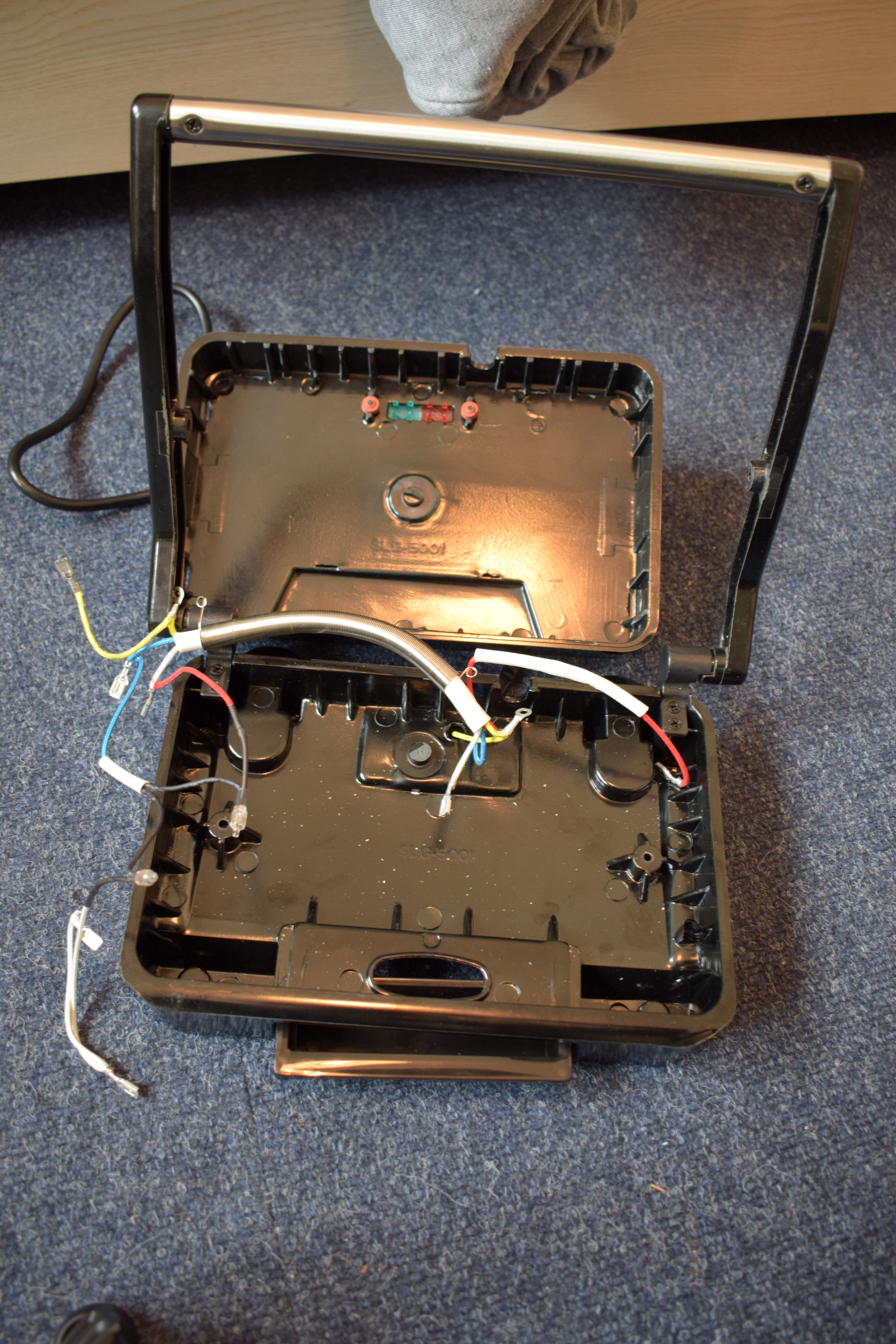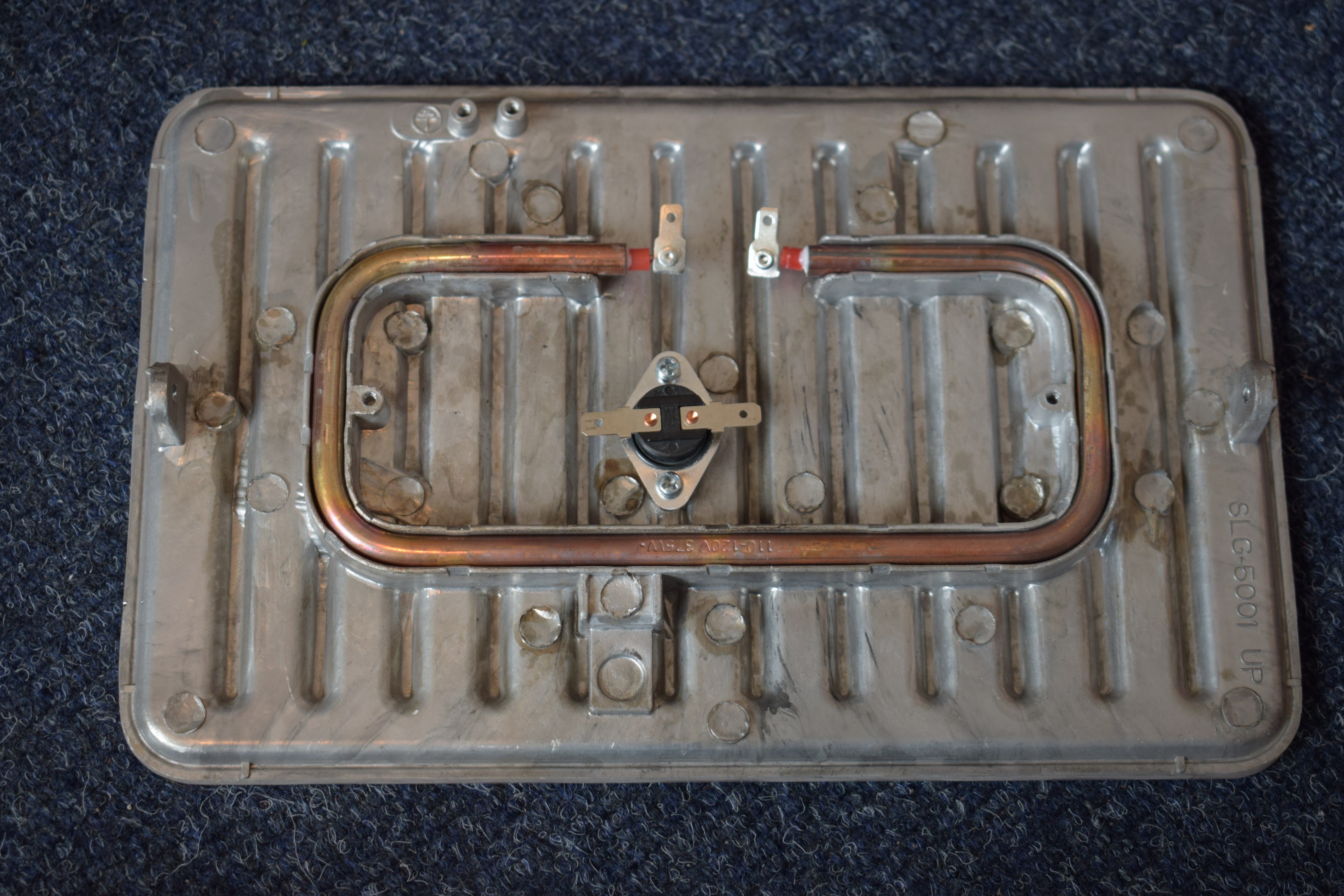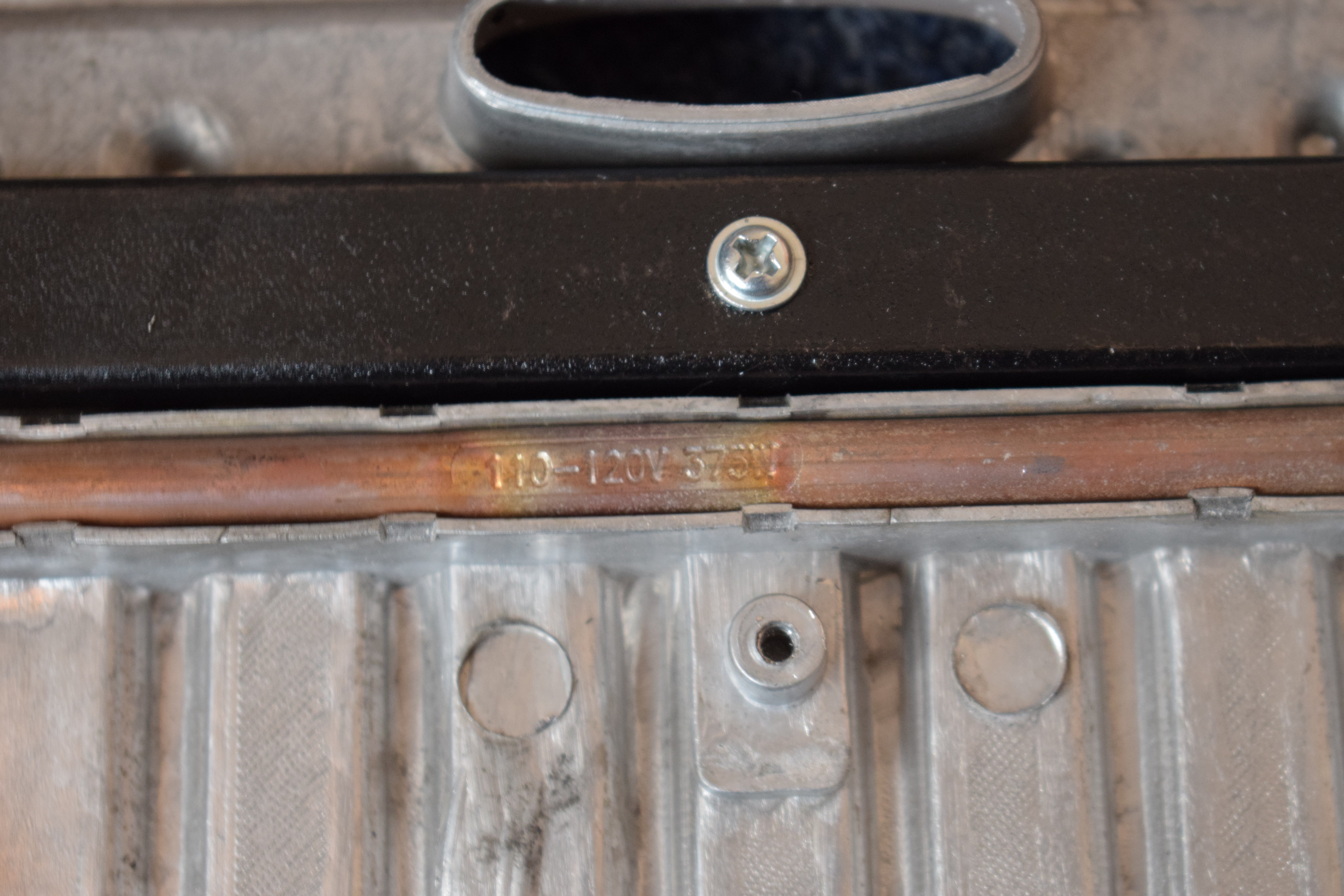Where do i start?
So, i decided i needed to start somewhere. I didn't want to buy a reflow oven, because there to expensive for my liking (like €440 here). And i didnt trust the ebay or amazon import type of oven's. So i was willing to try and make this work.
First i plugged the grill in and verified that it worked.
I've taken some measurements and this where the things I found worth noting:
- initially the temperature of the plates rose to around 200C
- it then fell to around 160-170 C and stayed there
- there was a temperature difference between the top and bottom plate (around 10 - 20C)
Then after i've let it cool down i took it apart (of course!).


After tearing the grill apart I've learned a few things:
- The grill has his heating elements in series (2x 110-120V 375 watts = 220-240V 750 watts)
This explains the uneven heating in between the top and bottom grill,
because the resistance of the heaters is never exactly equal to the other heater (and therefore giving more or less heat).
In combination with the temperature sensitive switching element that is mounted on one of the two plates.
It all results in that 10-20C temperature drift in between the two plates.
- If you don't understand ohms law, please i highly discourage you to even think of this, or work with mains voltage. Mains (230V ac) is more than enough to kill you or someone around you (It won't make you prettier either).

Now what?
well, i've got 2 options I think I can consider now:
- I can "leave" the heaters in series, hoping that reflowing with the lid closed will limit the amount of temperature difference that can develop in between the heater surfaces.
- I can put the heaters in parallel, but because the heaters are rated voor 110-120 V AC i'll need to transform mains (230V) down to 120V. this will require an decent transformer that is capable of handling roughly 6.25 Amps > 6.5A (constant load). on the secondary winding. this will cost some money (like €80-€90). or i'll have to wind/find my own transformer, from an microwave oven transformer or something...
I think i'll stick with my first option, just because it's easier to do, and is sounds a lot cheaper. And if i find out that series heaters are worthless for something as delicate as SMD reflowing than i'm forced to rethink my options.
I'll have to get the following things:
- Temperature sensors (thermocouples).
- apparently i'll need three I/O's per thermocouple (if i use a MAX type thermocouple amplifier (it uses SPI)) i was thinking about adding 4-6 thermocouples but that would mean i'll have to use an arduino mega, (Because an arduino uno has only 13 digital io's and i would need 12 to 18) which wouldn't leave room for buttons or blinkenlights.
- An MCU (probably an arduino MEGA or something arduino IDE compatible).
- A Relay to switch on/of the heating elements,
- you can find two kinds of conventional relays, an "10Amp" and a "30Amp" relay. these numbers are under ideal conditions I.E. a purely resistive load. although were are using a heater and a heater should be mostly resistive I think it will be safer to use a 30A relay because high power resistors like these will also have inductive behaviour, which will cause arcing and sparking while switching under load (no resistor is perfect!!).
- Some Kind of User Interface, (like a i^2c LCD or some 7 segment displays, to show the settings and temperatures)
- kapton tape ;)
- aluminum foil, to try transfer the heat of the grills more evenly to the pcb's
"I'm just getting started..."
 Ian S
Ian S
Discussions
Become a Hackaday.io Member
Create an account to leave a comment. Already have an account? Log In.